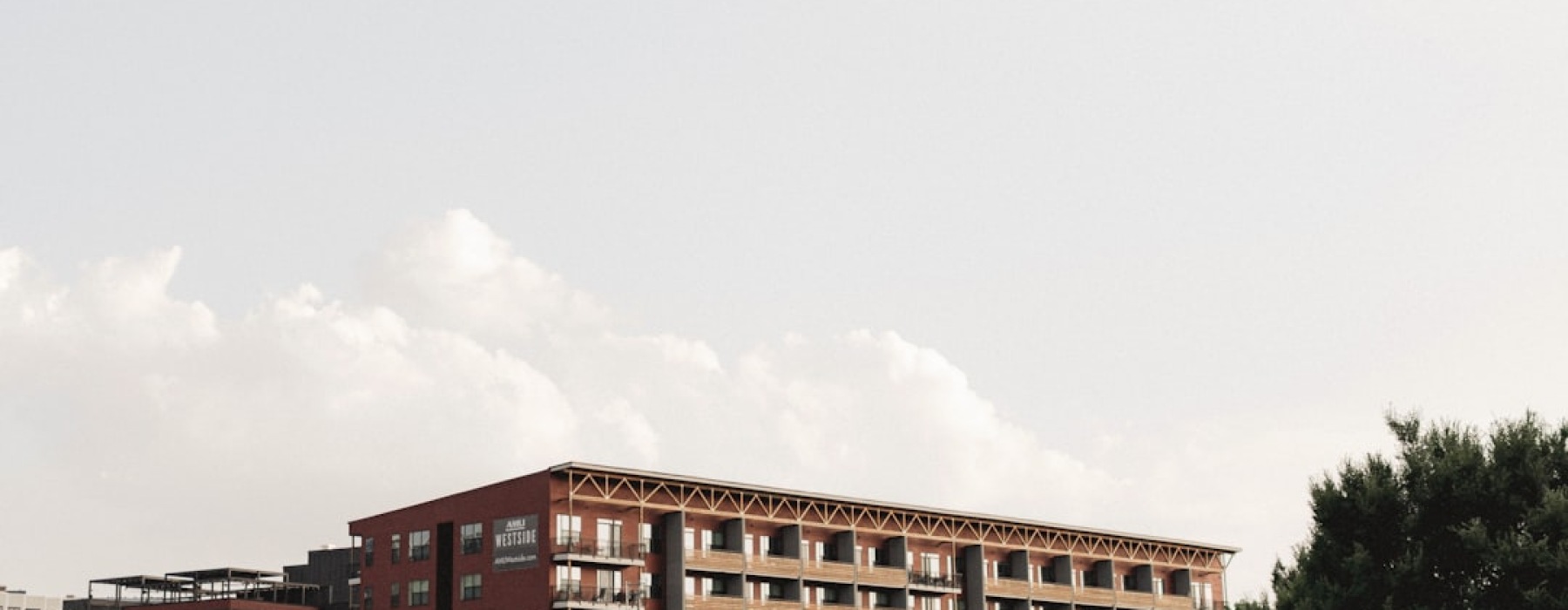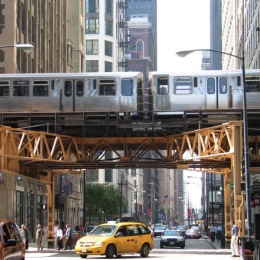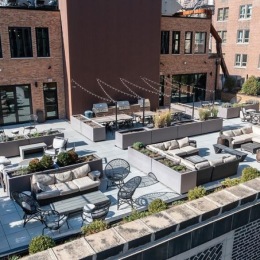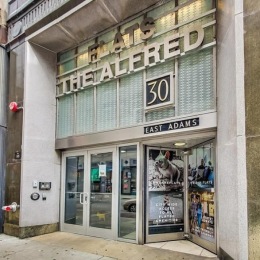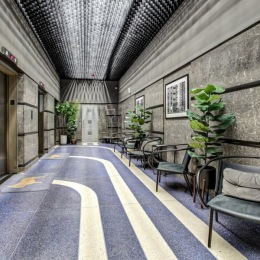Green Dreams Come True in These Apartments with Green Space
Why Urban Professionals Are Choosing Apartments with Green Space
Apartments with green space are changing how city dwellers experience urban living. From rooftop gardens to interior courtyards, these nature-integrated communities offer a refreshing escape from cramped, concrete-dominated environments.
Quick Answer: What to Look For
- Rooftop gardens with herb plots and seating areas
- Interior courtyards with native plants and walking paths
- Oversized balconies for personal container gardens
- Community farms for resident participation
- Green certifications like LEED Gold or Energy Star
Studies consistently show that exposure to nature reduces stress, improves focus, and improves overall well-being for apartment residents. The Village Green complex in Los Angeles demonstrates this perfectly - dedicating only 14% of its 64-acre site to buildings, with the remainder as landscaped green space.
Modern developments are getting creative with limited space. Park Landing Apartment Homes in Buena Park, CA features a 20,000 square foot green roof that provides essential outdoor amenities while meeting city requirements for open space on just a 2.2-acre site.
The benefits extend beyond personal wellness:
- Lower utility bills through natural cooling
- Cleaner air quality
- Stronger community connections
- Higher property values
Whether you're seeking a private balcony herb garden or shared rooftop terraces, green-space apartments offer the perfect blend of urban convenience and natural tranquility.

Why Green Space Matters in Apartment Living
There's something magical that happens when you step outside your apartment door and see thriving plants instead of concrete walls. Your shoulders relax, your breathing deepens, and suddenly the city feels a little less overwhelming. This isn't just in your head - scientific research on nature & stress shows that even small doses of greenery can transform how we feel and function in urban environments.
Apartments with green space offer residents measurable benefits that go far beyond curb appeal. When people have daily access to plants, trees, and garden areas, their stress hormones drop significantly. Sleep improves, work concentration sharpens, and relationships with neighbors naturally strengthen through shared outdoor experiences.
Green spaces work as nature's air purification system right outside your front door. Trees and plants continuously filter pollutants while pumping out fresh oxygen, creating cleaner breathing conditions in dense urban areas. For city dwellers dealing with smog and traffic fumes, this natural air cleaning makes a real difference in daily comfort.
Environmental & Economic Upsides
Green spaces work like natural air conditioning systems, and your utility bills will thank you for it. Shared courtyards, rooftop gardens, and tree-lined walkways help regulate a building's microclimate, keeping temperatures comfortable without cranking up the AC. This heat-island mitigation effect makes summer evenings more pleasant and winter days less harsh.
The cooling power of plants translates directly into lower utility bills for residents. Buildings surrounded by greenery require less energy for climate control, and green roofs provide extra insulation that keeps apartments warmer in winter and cooler in summer.
Property values consistently climb higher in developments that prioritize green space integration. Buyers and renters increasingly seek out nature-friendly communities, making these increased property value benefits a smart long-term investment.
Resident Health Boosts
The mental health change that comes with daily nature access can be profound. Residents consistently report significant anxiety relief and improved mood when they can easily step into green spaces. Something as simple as watering herbs on a balcony or walking through a landscaped courtyard provides genuine therapeutic benefits.
Physical activity becomes naturally enjoyable rather than a chore when green spaces are easily accessible. Instead of dreading gym time, residents find themselves jogging along tree-lined paths, practicing yoga on rooftop decks, or tending community garden plots. These active lifestyles develop organically when nature is woven into daily routines.
Vitamin D access improves dramatically when people spend more time in outdoor green spaces. Many urban residents struggle with vitamin D deficiency from limited sun exposure, but apartments with inviting outdoor areas encourage regular doses of natural sunlight.
Key Features to Look For in Apartments with Green Space
When you're hunting for apartments with green space, it's important to look beyond surface-level landscaping. The best developments integrate nature thoughtfully into daily life, creating spaces that truly improve your living experience.
Rooftop gardens represent the pinnacle of urban green living. These liftd oases often feature dedicated herb plots where you can grow your own basil and tomatoes, comfortable seating areas perfect for morning coffee, and walking paths for evening strolls. The most impressive rooftop spaces include outdoor kitchens for community barbecues and cozy fire pits for chilly nights.
Interior courtyards offer a more intimate connection with nature. The best designs follow the superblock concept - clustering buildings around car-free green spaces where kids can play safely while parents relax on benches. These peaceful courtyards become the heart of community life, with native shade trees providing natural cooling and quiet spots for reading.
Oversized balconies give you the freedom to create your own private garden retreat. Look for developments that specifically design these spaces with gardening in mind - you'll want enough room for vertical planters, self-watering pots, and maybe even a small herb wall. These personal outdoor spaces let you garden in your pajamas while still enjoying shared community amenities.
Community farms and orchards transform apartment living into something special. These collaborative spaces often include composting areas, tool storage, and seasonal harvest celebrations that bring neighbors together. There's something magical about sharing fresh vegetables with the person who lives two floors up.
| Feature Type | Private Benefits | Shared Benefits | Maintenance Level |
|---|---|---|---|
| Rooftop Gardens | Personal plots, quiet space | Community events, shared harvests | Medium |
| Interior Courtyards | Views from windows | Social interaction, children's play | Low |
| Balcony Gardens | Complete control, privacy | Building aesthetics | High |
| Community Farms | Learning opportunities | Shared resources, food production | High |
Green roofs go beyond simple gardens, incorporating lightweight soil systems and smart irrigation that makes maintenance manageable. Pet runs with natural grass give your furry friends space to play, while dedicated play areas surrounded by native plants create safe spaces for children to explore nature.
The magic happens when developments choose native plant palettes - these require less water, attract local wildlife, and create authentic connections to your region's natural landscape.
Certifications & Policies
LEED Gold certification signals a development's serious commitment to sustainable living. Buildings with this certification integrate green spaces as part of their overall environmental strategy, not just as decorative afterthoughts.
Energy Star certification often goes hand-in-hand with thoughtful green space design. When buildings incorporate natural cooling through strategic landscaping, they typically perform better on energy efficiency metrics - which means lower utility bills for you.
Biophilic design codes represent the cutting edge of nature-integrated architecture. These principles go far beyond adding plants, incorporating natural materials, maximizing daylight, and creating fractal patterns that mirror the organic shapes found in nature. Living in these spaces feels more harmonious and less stressful.
Many cities offer local tax incentives for developments that include substantial green space or achieve environmental certifications. These policies encourage developers to prioritize nature integration, creating more options for residents seeking green living.
Top-Rated Apartments with Green Space Across the U.S.
The movement toward apartments with green space has taken root across America, from busy downtown cores to quiet suburban neighborhoods. What started as a luxury amenity has become a necessity for residents who refuse to choose between urban convenience and natural beauty.
Urban infill success stories show how creative developers transform challenging sites into green oases. When space is tight, innovation flourishes. Developers layer rooftop gardens above ground-level courtyards, squeeze vertical farms between buildings, and turn unused corners into pocket parks.
Transit-oriented sites near subway stations and bus lines are leading the green revolution. Residents who can easily reach work or entertainment without cars often accept sustainable living more fully. These communities combine easy commuting with nature access, creating the perfect balance for environmentally conscious city dwellers.
Affordability strategies are making green living accessible to more people. Smart developers use green roofs to meet city requirements for open space while keeping land costs reasonable. When a 20,000 square foot rooftop garden can provide outdoor amenities for an entire building on a small urban lot, everyone wins.
The most successful developments don't just add green space - they weave it into daily life. Residents naturally gather around community herb gardens, children play safely in car-free courtyards, and neighbors bond over shared harvest celebrations.
1. Rooftop Retreats
When you step onto a well-designed rooftop garden, you immediately grasp why apartments with green space are redefining city life. These liftd oases convert unused roof area into three purposeful zones:
- Quiet nooks for reading or remote work
- Social spaces with comfortable seating and outdoor kitchens for skyline dinners
- Active areas—jogging paths, yoga decks, or container beds for herbs
Green roofs do more than look good. Built-in rainwater capture relieves storm drains and irrigates plants, while extra soil layers insulate the building, trimming heating and cooling costs.
The result is a panoramic view framed by greenery—urban energy on one side, calming nature on the other.
2. Courtyard Communities
Picture leaving your front door and walking straight into a calm, car-free square. Courtyard communities arrange buildings around shared lawns so people, not vehicles, occupy the center.
Key elements include:
- Superblock layouts that route traffic to the perimeter
- Tree-shaded walkways linking residences and amenities
- Soft play lawns where kids run while adults relax on benches
Native plants require less water and upkeep, and decomposed-granite paths—like those at Village Green—stay attractive for decades. The design turns everyday errands into neighborhood strolls instead of parking-lot sprints, fostering genuine connection among residents.
3. Balcony & Window-Garden Havens
Not every building can host a sprawling courtyard, but almost every apartment can host a plant. Vertical planters, hanging baskets, and self-watering pots turn compact balconies into mini jungles.
Create a DIY herb wall beside your kitchen door or use sunny sills for trailing pothos that double as air purifiers. Everything is container-based, so you can rearrange or bring it along when you move—no structural changes required.
Need inspiration? More info about balcony ideas shows how residents make the most of just a few square feet.
4. Resident-Tended Farms & Orchards
Some communities dedicate space to small farms where residents sign up for plots, add scraps to community compost, and celebrate at seasonal harvest parties.
Pollinator gardens support butterflies and bees, while tool libraries keep startup costs low. Sharing produce and know-how turns neighbors into friends and brings authentic farm-to-table living right outside your door.
5. Transit-Linked Green Hubs
Green living resonates even more when paired with a quick, car-free commute. Metro-adjacent developments weave tree-lined courtyards and rooftop gardens into buildings steps from train or bus stops.
Secure bike storage and, in some cases, rooftop solar push sustainability further. When driving isn’t part of the daily routine, residents spend more time enjoying outdoor spaces instead of sitting in traffic.
Design Innovations for Maximizing Greenery in Small Spaces
In tight downtown footprints, flexibility is everything. Modular planters, retractable trellises, and vertical gardens let residents grow upward instead of outward. Pair them with smart irrigation so busy professionals can travel without worrying about wilting basil.
Biophilic Architecture
Forward-thinking architects integrate greenery from the start. Natural materials, strategic daylighting, and living walls blur the line between inside and out, satisfying our innate need to connect with nature.
Case Study: Affordable Infill with a Green Roof
Park Landing Apartment Homes installed a 20,000-square-foot green roof, meeting open-space codes for 70 units on just 2.2 acres. Prefabricated plant modules created instant landscaping, proving generous outdoor amenities can fit even on modest, budget-friendly lots (see this research).
Frequently Asked Questions about Apartments with Green Space
How do green spaces influence rent and resale value?
Apartments with green space consistently attract higher rents and stronger resale values than their concrete-only counterparts. The Village Green complex proves this point beautifully - units built in the 1940s remain highly desirable today, largely thanks to their abundant landscaping and thoughtful community design.
Green certifications like LEED Gold can boost property values by 15-20% compared to similar buildings without environmental features. Today's renters and buyers actively seek out sustainable living options, making these green investments smart business decisions for property owners.
The beauty of green-space living lies in the energy savings that help balance any premium pricing. Natural cooling from trees and gardens, plus improved insulation from green roofs, often translate to noticeably lower utility bills.
What maintenance responsibilities fall on residents?
Shared green spaces like rooftop gardens and interior courtyards typically fall under professional management. Building staff or contracted landscaping services handle the heavy lifting - tree pruning, irrigation repairs, seasonal plantings, and major maintenance tasks.
Private balcony and patio gardens are a different story entirely. These spaces become your personal responsibility, including watering, fertilizing, pruning, and replacing plants as needed. Most residents find this hands-on involvement surprisingly rewarding rather than burdensome.
Community garden plots often operate on shared responsibility models. If you participate in community farming, expect to contribute a few hours monthly to collective tasks like weeding, composting, and tool maintenance.
Can renters personalize balcony or window gardens in most leases?
Most lease agreements welcome container gardening and temporary installations that don't damage building structures. Hanging planters, portable containers, and removable trellises typically get the green light from property management without much fuss.
Permanent installations like built-in planters or irrigation systems usually require written permission and may need removal when you move out. Smart renters discuss their gardening dreams with leasing offices before making significant investments.
Weight restrictions on balconies can limit container size and quantity. Property managers understand these safety requirements and can provide helpful guidance on load limits and appropriate plant selections for your specific space.
Conclusion
The future of city living is green, and apartments with green space are leading the way. These thoughtfully designed communities prove that urban convenience and natural beauty aren't mutually exclusive - they're the perfect partnership for modern life.
The evidence speaks for itself: daily exposure to green spaces reduces stress, sharpens focus, and boosts overall well-being. Whether you're nurturing basil on your balcony or joining neighbors in a rooftop garden, these natural touches transform apartment living from merely functional to truly fulfilling.
At The Alfred Apartments, we've mastered the art of blending historic charm with modern green living right in Chicago's Loop. Our carefully restored architecture honors the craftsmanship of bygone eras while our contemporary amenities support the lifestyle you deserve today. It's the best of both worlds - timeless elegance meets sustainable urban living.
Smart urban professionals aren't just choosing green-space apartments because they're trendy. They're making strategic investments in their health, community connections, and environmental impact. As cities grow denser and life moves faster, developments that prioritize nature become more precious and valuable.
The change happens quickly once you experience it. That morning coffee tastes better when you're surrounded by plants. Evening walks through landscaped courtyards become cherished rituals. Conversations with neighbors flow naturally when you're tending shared gardens together.
Ready to find how historic elegance and green living create the perfect urban sanctuary? More info about amenities at The Alfred showcases our unique approach to downtown Chicago living - where every detail honors both our architectural heritage and your modern lifestyle.
Your connection to nature doesn't have to wait for weekend escapes or distant dreams. It can be part of your daily routine in an apartment that puts green space at the heart of city living.
